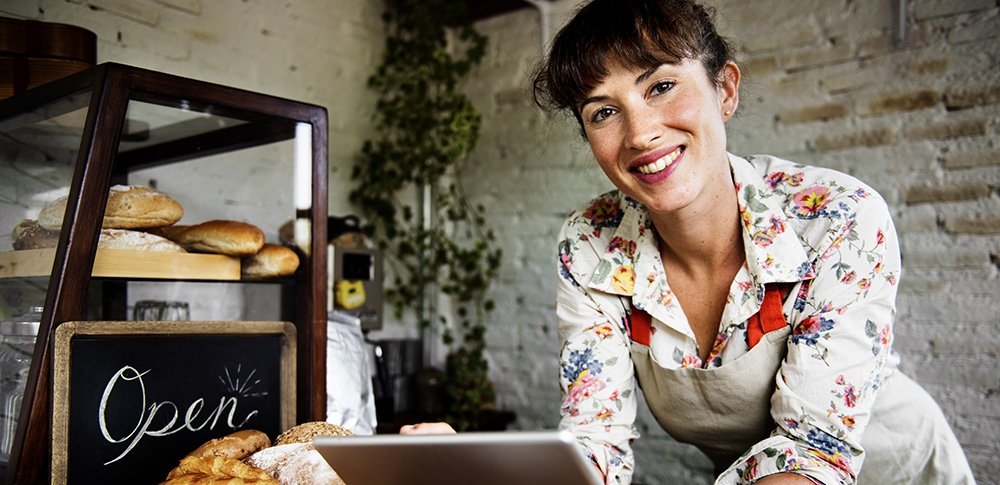
If you own or operate a retail store, it’s likely that you have a robust marketing plan designed to lead shoppers to your business. But, do you also have marketing initiatives that promote to shoppers once they enter your store?
If you don’t, you aren’t alone. A lot of businesses put a majority of their marketing efforts into attracting customers to their store rather than connecting with them once they arrive.
But this can be a mistake as marketing to your in-store customers comes with a slew of benefits.
- It can encourage upsells and cross-sells and increase the amount spent by each customer.
- It helps get customers to come back by building brand affinity and customer loyalty.
- It promotes to existing customers who are easier to sell to and typically spend more than new customers.
So if you’re spending all of your marketing dollars on bringing customers to your location, you may want to think about adding some in-store marketing strategies that help you get the most out of shoppers once they arrive.
Here are some ways you can start using in-store marketing to connect with customers at your location.
Focus on Selling Today… and Tomorrow
Before you start developing ways to market to customers in your store, keep something in mind. The goal of in-store marketing is two-fold. You want to use your tactics to get customers to spend more during this visit and to get them to come back again.
So as you design your marketing plans, always think about how you can connect with customers today and tomorrow. To do that, implement strategies that help you collect customer data and contact information that allows you to remarket to and retarget existing shoppers to get them to come back to your store another time.
- Request customer contact information at check-out.
- Give away coupons in exchange for contact info.
- Offer contests that require contact information to sign up.
- Create a VIP club or loyalty program that creates customer profiles and offers rewards to repeat shoppers.
Engage, Inform, and Connect Through Digital Screens
It’s like that you already have some signage around your store that promotes or explains your products. Digital signage allows you to enhance these promotions so they attract more attention and resonate more deeply with in-store shoppers.
We know that video walls and digital screens effectively capture attention. Forrester reported that over 80% of consumers watch programming on digital signage when present. So use animations, sliding graphics, and videos to engage your customer and promote your products, brand, and discounts.
Digital tools are extremely flexible so you can use them in a variety of ways.
- Regularly change out content to feature your most current deals, specials, and promotions.
- Set up interactive displays with product catalogs that allow customers to browse inventory that is online or available at other stores.
- Feature videos that show a behind-the-scenes look at your company or lifestyle clips that promote your brand values, mission, and vibe.
- Set up screens near displays or end-caps that feature product demo videos that explain how to use products.
- Feature your social media streams or curate posts that use your branded hashtag.
Offer Free WiFi to In-Store Shoppers
Offering free WiFi doesn’t seem like a marketing initiative, but there’s much more to this simple offering than it seems.
Through WiFi marketing, you set up a system so that in-store customers are prompted to join your WiFi network while in your store. This gives free service to shoppers while giving you an opportunity to market to them in a variety of ways. You can:
- Present them with custom splash landing pages that share important messages or promotions.
- Send them push notifications with deals and discounts while in your store or the next time they are near your location.
- Collect contact information so you can connect with them after they leave your store.
- Learn about your customers by collecting details about their demographics and interests.
Set the Mood with Overhead Music
In-store marketing isn’t just about advertising to your customers. It’s also about setting the mood in your store and creating an environment that shoppers want to be in. One way to create an engaging and inviting store is by using overhead music to set the tone and target the type of shoppers you want to attract and keep.
Create a custom overhead music playlist that selects songs and genres that are perfect for your ideal audience. Also, consider how tempo plays a role in how customers act in a shopping setting, and choose music that encourages customers to either shop quickly or spend leisurely time browsing your store.
Use Overhead Messaging to Share Essential Info
Overhead sounds set the tone and mood in your store. They can also be used to further your marketing initiatives. So add marketing messages throughout your overhead music.
Overhead messaging is the perfect platform for sharing important information with in-store shoppers. You can quickly catch attention and drive shoppers toward your new products, announce discounts, and promote upcoming events or deals.
Launch an In-Store Marketing Plan for Your Retail Store
You may have thought you were doing enough with your marketing initiatives by using tactics that draw customers to your store. But, today that’s not enough to make your business thrive.
To stand out from competitors, build lasting relationships with customers, and increase your revenue, you need to also use in-store marketing in your retail store. Connecting with your in-store customers gives you an opportunity to grow your brand by doing more business with the customers you already have.
To learn more about in-store marketing and how you can use the tools and tactics mentioned in this post, contact Spectrio today. Our marketing specialists can help you design an in-store marketing plan that is perfect for your unique retail outlet and customer type.
Or, for more information, grab our free ebook on how to create amazing in-store experiences for customers using audio and video tools.
